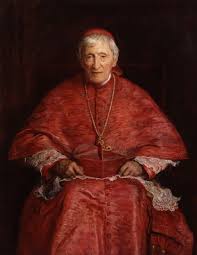In his book Love and Responsibility, the future Pope John Paul II lamented the demise of virtue, and in particular, the virtue of chastity. A spirit of resentment has emerged in the modern psyche towards high moral standards and anyone who practices them. What was once admirable, even if very few people could master it, is now met with scorn and rationalization. Chastity is viewed as repression and psychologically harmful, especially in young people. But in truth, without chastity there can never be any true love. That is why John Paul II thought modernity needed a “rehabilitation of chastity” and set out a program in Love and Responsibility for accomplishing it.
An Elusive Definition of Chastity?
Part of the reason that such a rehabilitation is necessary is because chastity is rarely defined in positive terms. St. Thomas Aquinas defined chastity as a sub-virtue of temperance, the virtue that controls the concupiscible appetite. He points out that chastity “takes its name from the fact that reason ‘chastises’ concupiscence, which, like a child, needs curbing” (ST II-II, q.151, a.1). Of course, modern sensibilities being what they are, any whiff of restraint, is seen as an assault against freedom. If chastity is to be revived then we must expand our view of it as “a purely negative virtue. Chastity, in this view, is one long ‘no’” (L&R, p.170). What Fr. Wojtyla hoped to accomplish then is to see chastity as “above all the ‘yes’ of which certain ‘no’s’ are the consequence” (ibid).
Chastity’s alleged violation of freedom really seems like an assault on love. But this is only because our view of love, especially between the sexes, is far too narrow. When the love between a man and a woman is viewed as primarily based on the subjective emotional and sexual experiences of the individuals then chastity will always be something negative. This is not love, but use. The two people use each other in order to “feel” like they are in love. They do not love the other person but they love the feeling of being in love. And they will be “in love” with the other person only so long as they are able to cause the emotional response.
As opposed to its counterfeit, love is something objective because it is based not upon on an emotional and sexual response that the other caused, but on the objective value of the other person. Love must always be directed towards the person and the value that they have as persons. As good and as powerful as the sexual value of a person is, it does not exhaust their value. Love between the sexes incorporates that sexual value into the total value of the person as a person.

When use is substituted for love, then chastity “feels” like it is holding love back and keeping it from blossoming. In truth, chastity is an indispensable ingredient for love because “its function is to free love from the utilitarian attitude” (p.169). Chastity is not a ‘No’ to sexual pleasure but a ‘No’ to treating the other person as an object of sexual gratification. It is a steady and habitual refusal to use the other person. It is a habitual readiness to affirm the full value of the other person. Returning to JPII’s words, “only the chaste man and the chaste woman are capable of true love. For chastity frees their association, including their marital intercourse, from that tendency to use a person” (L&R, p. 171).
Pleasure Freed by Chastity
The traditional definition of chastity, true as it is, does not exhaust its full meaning. Chastity does not just moderate our sexual desire, but “liberates love from the attitude of use.” It is then both a ‘No’ and a ‘Yes’—no to use, yes to love. No longer under the sway of unbridled emotion, sexual desire is liberated to roam free and be directed towards the full value of the person. Only the chaste man and woman experience true pleasure of sexual desire because it is governed by reason and directed towards its natural end.
This is the great lie of those who would have us believe that chastity is mere repression. Sinners always love company and seek a way to rationalize their own vices. On the surface, and at least initially, it is easier to yield to sexual desire. But pleasure is always fleeting and when chosen as an end always operates under the law of diminishing returns. But John Paul II encourages his readers to persevere because virtue takes time and suffering because of our fallen nature. Once it matures pleasure is restored to its natural place and, surprising to our untrained minds, actually increases. The “in-between” time in which chastity feels like repression is certainly difficult, but once it grows, like a fully mature tree, it provides the sweet fruit of pleasure. This reality only comes about however when chastity is seen as worthwhile.
Fully rehabilitated chastity enables us to see that it is, like every decision that we make, both a no and a yes. It is a no to a utilitarian relationship and a yes to the full blossoming of both spousal love and friendship.


